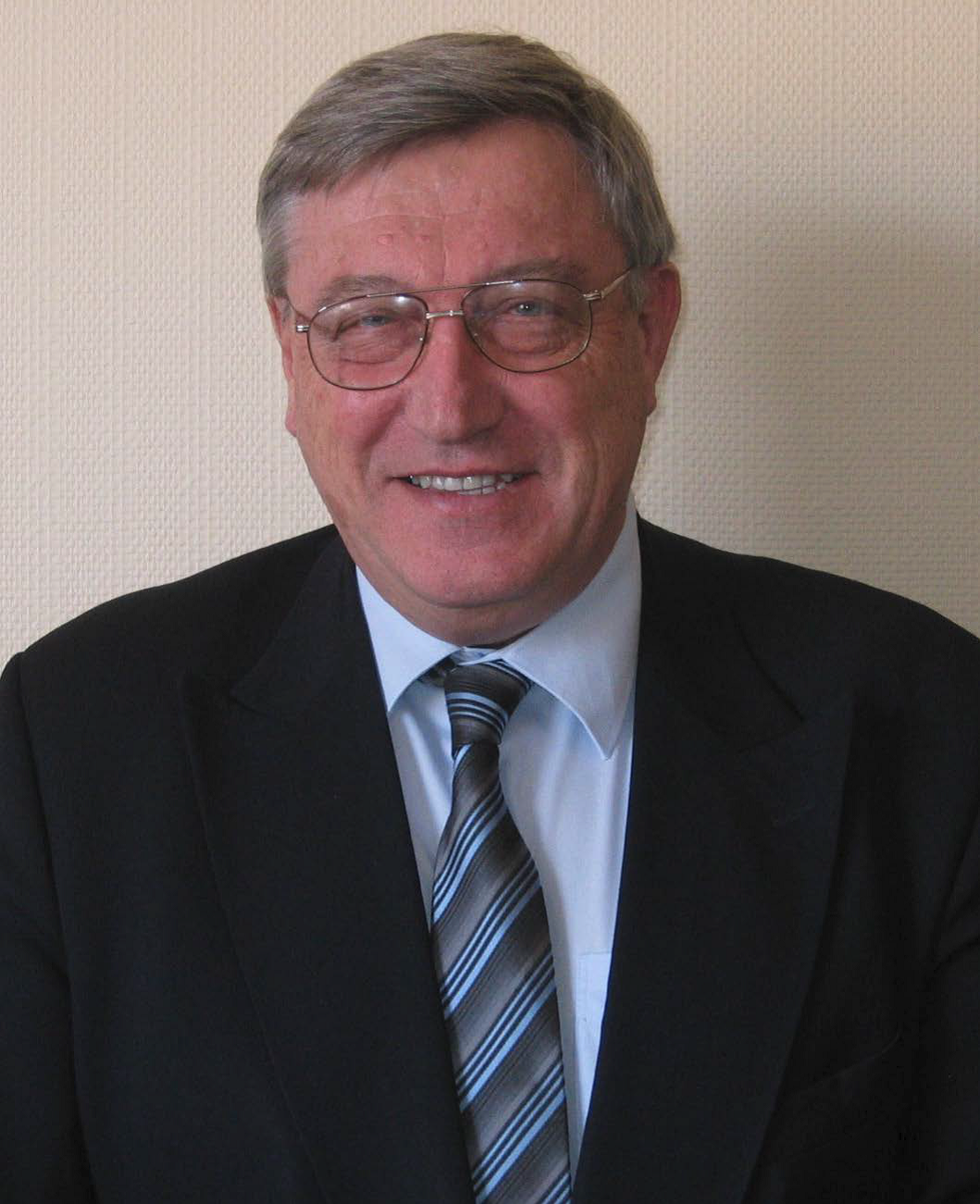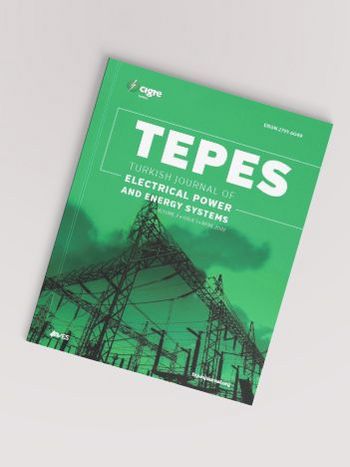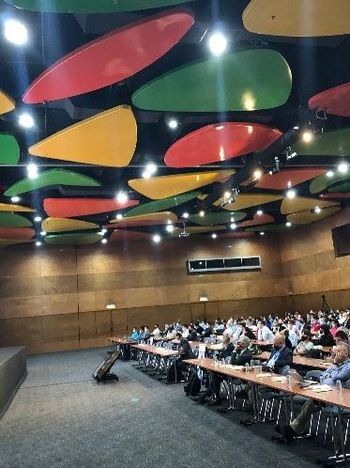CIGRE 2022 Kyoto Symposium: Final Report
The CIGRE Japan National Committee, working with seven Study Committees, hosted the Symposium in Kyoto, Japan on 5-8 April 2022. The Symposium was conducted in a hybrid event format with participants both in-person and online.
The Symposium focused on research, developments and policies related to the Symposium theme; Power system transformation including active distribution.

by Technical Organizing Committee:
C. Schwaegerl, Chair SC C6, TOC Chair; O. Sinenko, Chair SC D2, TOC Chair; K. Kawakita, Chair SC B3; A. Iliceto Chair SC C1; J. Darriba Macedo, Chair SC C2; Z. Emin, Chair SC C4; A. Cruickshank, Chair SC C5 and LOC Chair, Y. Matsuura
Introduction
Various kinds of subjects in the power system industries were shared and discussed among the experts, such as “Driving towards system reliability, security and resiliency”, “New commercial and technical relations between TSO, DSO and customer” and “Innovative development for a sustainable power networks”.
456 participants from 27 countries attended the four-day Symposium. 156 papers from 21 countries were presented in 22 oral sessions and two-day poster sessions.
The Symposium was organized by a Local Organizing Committee of local experts and technically supported by Study Committees B3, C1, C2, C4, C5, C6 and D2, with SC C6 and D2 leading it.
Symposium Program
The Symposium was held in Kyoto International Conference Center located in Kyoto, Japan.
The overall program consisted of fourteen events and sessions:
| Date | Time | Events/Sessions |
|---|---|---|
| April 5 (Tue) | 10:00-11:30 | Tutorial: Day 1 |
| 12:45-16:00 | Oral Session: Day 1 | |
| 16:30-19:00 | Opening Ceremony | |
| 19:30-21:00 | Welcome Reception | |
| April 6 (Wed) | 9:00-10:30 | Tutorial: Day 2 |
| 10:30-12:00 | Poster Session: Day 1 | |
| 13:00-18:30 | Oral Session: Day 2 | |
| 19:00-21:00 | Gala Dinner | |
| April 7 (Thu) | 9:00-16:30 | Oral Session: Day 3 |
| 10:30-12:00 | Poster Session: Day 2 | |
| 13:00-14:30 | NGN Forum | |
| 15:00-16:30 | Tutorial: Day 3 | |
| 17:00-18:30 | Closing Remarks | |
| April 8 (Fri) | 8:00-16:00 | Technical Tour |
The opening Ceremony was held on the first day of the Symposium with welcome speeches by Chair of JNC, Dr. Hiroshi Okamoto, President of CIGRE, Mr. Michel Augonnet, President of Kansai Transmission and Distribution, Mr. Yoshihiro Doi, Chair of SC C6, Prof. Christine Schwaegerl, and Chair of SC D2, Dr. Olga Sinenko, and keynote speeches were delivered by President of the Institute of Electrical Engineers of Japan, Prof. Hiroyuki Osaki, Director of Electricity Industry and Market Office Agency for Natural Resources and Energy of Ministry of Economy Trade and Industry, Mr. Takahiro Shimomura, and Chair of CIGRE Technical Council, Mr. Marcio Szechtman.
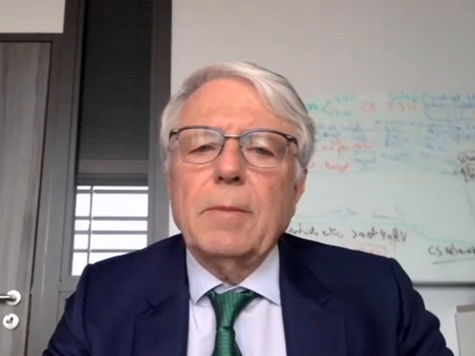
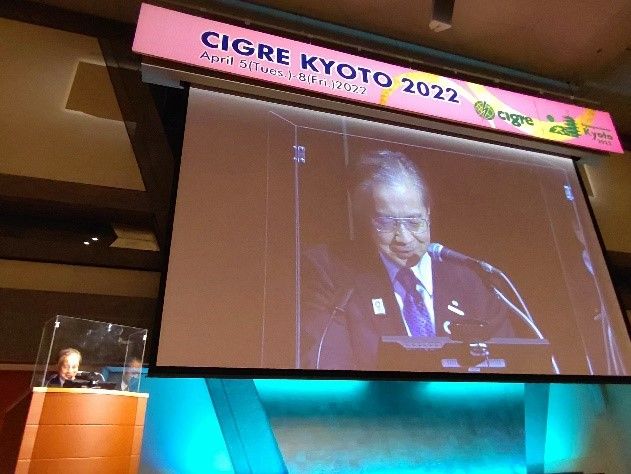
Welcome speeches by President of CIGRE, President of Kansai Transmission and Distribution

Keynote speeches by President of the Institute of Electrical Engineers of Japan, Chair of TC
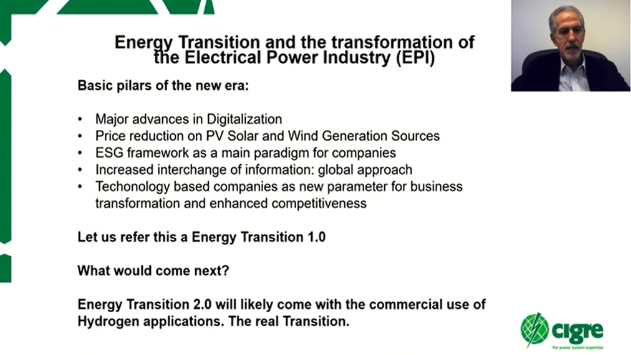
Keynote speeches by President of the Institute of Electrical Engineers of Japan, Chair of TC
22 oral Sessions were held in 2 or 3 parallel tracks for 3 days, where paper presentations were delivered from many experts around the world and lively discussions were made among onsite and remote participants across widespread technical fields.
| Session | Session Title |
|---|---|
| Session 1 | On the Edge of the Progress: Drones, AI, ML, etc |
| Session 2 | Grid Model and Machine Learning |
| Session 3 | Power Quality Challenges |
| Session 4 | Cyber Security: A Novel Reality of Power Industry |
| Session 5 | Lightning #1 |
| Session 6 | Aggregating and integrating DERs |
| Session 7 | Lightning #2 |
| Session 8 | Substations |
| Session 9 | Voltage control in distribution systems |
| Session 10 | Dynamic Stability |
| Session 11 | Innovative planning of distribution systems |
| Session 12 | New Operation: Power System |
| Session 13 | Planning |
| Session 14 | Smart Technologies for DER integration |
| Session 15 | New Operation: Network |
| Session 16 | Monitoring and Control, The New Era of Communication Solution |
| Session 17 | Activities and methodologies as countermeasures |
| Session 18 | Markets, incentives and coordination for DER |
| Session 19 | Storage and EV in distribution systems |
| Session 20 | New Approaches to the Exchange and Use of Energy Data |
| Session 21 | Network planning and operation |
| Session 22 | Technical solutions facilitating grid modernization |
Poster Sessions for SCs C1, C2, C4, C6 and D2 were held in the venue on two days and Japanese experts presented their works and efforts to onsite audience. E-posters with recorded presentation were also provided to online participants through the online streaming website.
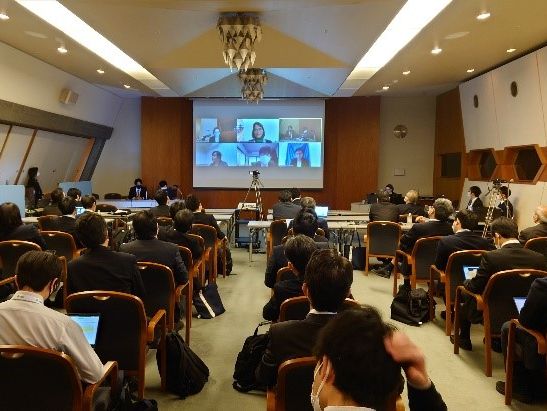
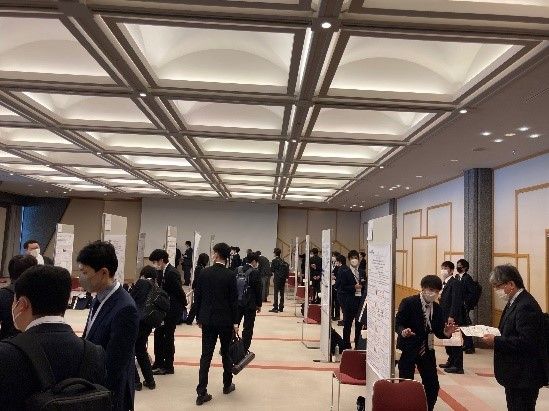
Oral session: Voltage control in distribution systems, Poster session day 1
Seven tutorials took place both in-person and online:
| SC | Title of Tutorial |
|---|---|
| C2/C4 | Impact of high penetration of inverter-based generation on system inertia of networks |
| C6 | Flexibility provision from distributed energy resources |
| D2/C6 | Advanced consumer side energy resource management systems |
| C4 | Effectiveness of Line Surge Arresters for Lightning Protection of Overhead Transmission Line |
| B3 | Application of robotics in substations |
| D2 | Enabling Software Defined Networking for EPU telecom applications |
| C1 | TSO-DSO coordination in grid planning |
During the Closing Remarks, the SC Chairs presented summarized findings and learnings at this Symposium for each SC sessions and the Symposium was concluded with closing address by Vice Chair of JNC.
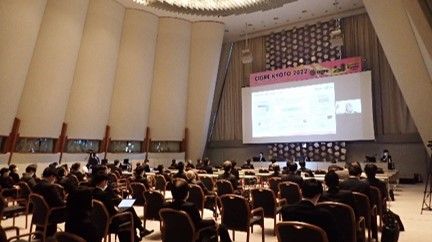
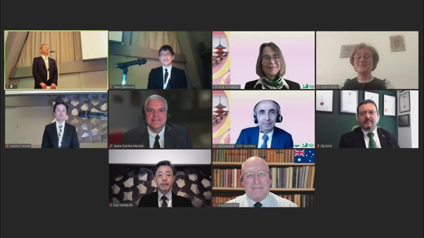
Closing Remarks Photos
The final day, onsite participants visited the storing and unloading terminal for liquefied hydrogen on Kobe Airport Island and the hydrogen co-generation system with 1 MW hydrogen gas turbine generator during the Technical Tour.
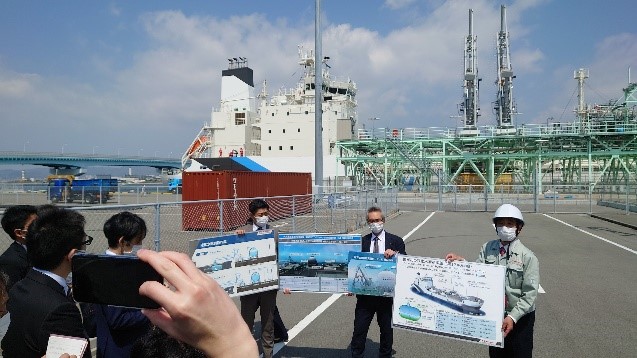
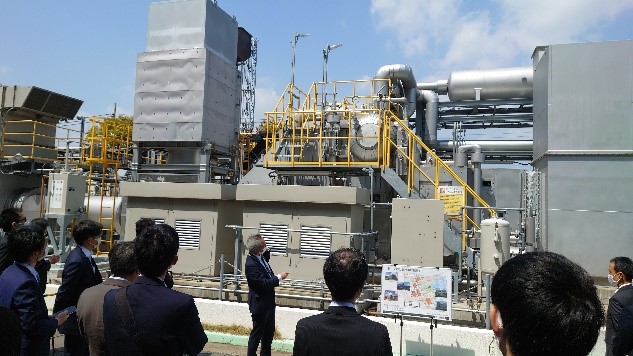
Technical Tour Photos
Key Learning Points
The following sections provide key learning points per Study Committee.
Study Committee B3: Substations and electrical installations
Seven excellent papers were presented in Session 8 “Substations”.
Two papers relevant to PS1: Driving towards enhanced system reliability, security and resiliency.
- One paper introduced the deployment of new mobile substations against severe climate conditions. Climate conditions are becoming more severe year by year due to global warning. Therefore, strategic deployment of mobile substations is necessary for the early restoration in case of substation power outages.
- Another paper reported replacing 500 kV power transformers to reinforce against earthquakes and enhance maintainability. In conjunction with power transformer replacement, applying the latest technologies such as polymer bushing, vacuum on-load tap changer, and the strengthening of seismic performance can reduce maintenance costs, improve maintainability, and improve reliability.
Five papers relevant to PS3: Innovative developments for a sustainable power network.
- Three papers introduced innovative condition monitoring applications using IoT sensors and AI algorism. Advanced technologies such as IoT, ICT and AI have the potential to enable advanced maintenance, such as condition diagnosis and abnormality prediction, and to change the way maintenance drastically will be implemented. Conventionally, maintenance personnel carried out condition checks on-site. In the future, sensors will remotely acquire information. Then AI will propose to maintenance personnel optimal maintenance methods.
- One paper introduced the retrofitting project from conventional substations to digital substations by applying the IEC 61850 process bus. Another paper described the benefit of smart digital substation using acquired data to manage substation assets. Digital substation technology opens the door to advanced operation and maintenance applications. Applying international standard protocols such as IEC 61850 allows easy operational and information technology integration. Information visualisation contributes to the advanced management of substation assets and reduces operational risks.
“Application of Robotics in Substations” from CIGRE TB 807 was presented at the B3 Tutorial.
- The benefits of the application of substation robots include improving personal safety, enhancing operation and maintenance efficiency, and providing information for asset management. Deployment of robotics in substations also offers an effective solution to the problems of safety, labour shortages, workplace hazards, and unattended operation.
- In the near future, with the development of robotics, AI, and sensor technologies, and with the support of standardization, substation robots will see significant technical advancements and will thus be better able to serve safe and reliable power grid operation.
Study Committee C1: Power system development and economics
- It is evident from the C1 session and Tutorial that C1’s cover area is getting so wide and faced with so many challenges in terms of resiliency, flexibility, carbon neutral system, integration of renewable generation plants, cost-benefit assessment of projects, and multi-stakeholders coordination.
- Six excellent papers were presented at Session 13 “Planning”.
- Three papers presented as PS1: Driving towards an enhanced system reliability, security and resiliency. One paper presented how flexibility can support resilience in terms of novel definition about “flexibility” and “resilience”. One paper introduced the evaluation about power system operation flexibility before going over novel market launch and policy change. One paper showed the trial of comprehensive power supply and demand simulations specifically to 5 African countries.
- One paper presented as PS2: New commercial and technical relations between TSO, DSO, and customers. It introduced varieties of actual approaches to enable the maximum integration of renewable energy with extremely limited pre-existing adjustable resources.
- Two papers presented as PS3: Innovative developments for a sustainable power network. One paper evaluated the effect of global interconnection, storage, and demand response and then came into conclusion that interconnection is the best option. One paper expressed “Carbon Neutral” world for Japan in numbers introduced by comprehensive and large number of simulations.
- C1 Tutorial “Planning Co-ordination between System Operators, Transmitters and Distributors” from WG C1.40 (Technical Brochure TB 848)
DER penetration has a significant impact on how the networks need to be coordinated. Surveys among operators world wide confirmed the need of coordination both in planning and in operation. Both approaches are seen as necessary and complementary: bottom-up, to cover practical needs of the operators in charge of delivery grid development plans and grid management, as well as top-down, to provide a structured and uniform set-up of relations and reciprocal obligations. The coordination starts form information exchange (data, format, time horizon, metrics, etc.) but extends much beyond, i.e., in the very processes of planning the optimal developments and the most cost-effective investments in the power grid as an holistic system of systems. Indeed, the traditional boundaries among transmission service and distribution service are already fading away, even if the organization of companies still reflects the legacy paradigm; therefore, the solutions to keep providing a secure, affordable and resilient service to grid users lays in the various coordination forms taking place at all latitudes. Operators who are still vertically integrated may find themselves in an easier position to avoid/settle operational conflicts, although this is not given for granted.
Study Committee C2: Power system operation and control
- The situation remains in which the development of new techniques and computational tools, as well as the evolution of the hardware itself, has been allowing new and more effective approaches in solving the problems of programming and operation of electrical systems, facing the disruptive evolution that comes being experienced in the energy sector.
- In the same way, the new reality of the systems and the new operational needs have been opening space for the review of control processes with the emergence of new proposals for solutions with initial results that generate expectations for their implementation and future developments.
- We live in complex times and, therefore, there are no limits to the ways of searching for creative solutions that bring technical advances in the operation, regardless of whether the ideas come from other areas with high or low affinity in their processes. Adapting ideas to generate new and effective solutions to be implemented is certainly a promising path.
- Renewable energy sources and their known fluctuations require reconsideration in established processes, such as voltage control, not only because of the need for successful results, given the new reality, but also because of the use and physical stress of equipment in obtaining these results. The use of established analysis tools (OPF) reprogrammed to point out results that minimize this stress appears as a promising option.
- Again, familiar tools (OPF) can and should be used to prevent excess freedom in energy bids options. Establishing in advance, in real time, a bid filtering scheme that leads to the degradation of the security of the operation (network congestion) facilitates decisions in Real Time and can avoid market reactions due to the lack of predictability.
- WAMPAC, as well as other new technologies, have already been successfully applied to improve operating processes, and other future applications are already on the way. It is worth disseminating knowledge for joint development and to achieve together the state of the art.
- Re-studying the business model that involves the electrical system and its operation can strengthen the commitment of guaranteed reliability at the least possible cost, this can be especially interesting when the system already has resources where new analysis techniques can optimize and maximize the results of its application, without further burden of additional costs.
- In the same way that the system evolves quickly, our ability to learn with the processes and tools applied must also be accelerated, even following the speed at which computational resources are evolved. Even well-known techniques can and should be updated or even implemented considering these new features to ensure more safety in the operation.
- The changes experienced by the electrical system have required changes in the tools and training processes of the Real Time operation teams. Its effective implementation in simulation resources is in different stages and depends on the facilities brought by the computational tools and the effort required for the task of inclusion in the simulators.
- We are facing opportunities for new network reduction scheme installation thanks to computer capability improvement. The presenter introduced the existing network reduction approaches are customized to achieve reduced models for real-time simulators. It is shown that the reduced model made using the proposed method can maintain a high accuracy of dynamics.
Study Committee C4: Power system technical performance
SC C4 was in charge of four sessions during the symposium and the following bullet point provide a concentrated summary of the session:
- Harmonics will be here with us for the foreseeable future and hence electricity supply systems of the future will need to pay special attention to power quality to ensure equipment operate in a compatible electromagnetic environment.
- We cannot change severe climate phenomena such as lightning, but we can understand, predict and design power networks that are more reliable and resilient to such phenomena with improved tools and methodologies.
- As we transition towards decentralised and decarbonised power systems, the need to develop enhanced understanding of system stability issues will become paramount so that solutions can also be developed at the same pace.
Detailed summary of individual sessions under their subject matter is given below:
- Four papers were presented at Session 3 “Power Quality Challenges”, providing an interesting overview of the challenges expected during pre-connection harmonic assessment studies. A novel control algorithm is proposed to help mitigate some of the distortion by converting an inverter-based resource into an active filter when inverter capacity is available. This could allow for higher harmonic allocations and even be compensated in emerging markets where power quality mitigation is becoming an ancillary service.
- Prior to connection of a new IBR, it is common to conduct a harmonic compliance assessment and allocate a portion of the total permissible emission limits to the new installation. Several challenges with pre-connection harmonic studies are noted. A typical example is that frequency domain models of IBR do not capture the simultaneous impact of active and reactive power output, terminal voltage and generator speed (if applicable) on the overall harmonic behavior.
- Long term measurements of voltage THD levels is showing a general decreasing trend in THD, which is unexpected given that more harmonic producing devices have been interconnected. Furthermore, there is discrepancy between pre and post connection levels suggesting that there may well be more room than anticipated. Various reasons are suggested for the observation but one clear take away is a possible new working group covering this area.
- Renewable energy zones are starting to formulate in Australia, which is also concentrating the sources of harmonics in one area. Setting appropriate harmonic current and voltage allocation limits to each resource is challenging. The Australian Energy Market Operator is introducing power quality as an ancillary service allowing entities to buy and sell services. A method to optimize harmonic allocations is developed and proposed based on total harmonic distortion and best-fit harmonic profiles.
- A novel control algorithm is proposed to be added to distributed energy resources to allow them to act as an active filter at times when their output is not near maximum. A case study is shown where significant reduction in voltage THD is demonstrated because of the new approach. When more than one DER on a feeder is equipped with the control algorithm there is some improvement when a coordinated approach is used but independent control also works very well.
- There were two dedicated sessions on lightning, “Lightning I and II”, attracting 12 papers. The following summary can be drawn from the presented papers:
- The development of high performance EMT analysis tools based on the finite-different time-domain (FDTD) method are expected for better evaluation of electromagnetic transient phenomena including lightning electromagnetic pulse (LEMP) and heat transport analysis in the power system.
- The lightning performance of transmission lines is an essential factor for the insulation designs of transmission lines and substations/power stations. The new lightning protection tools such as transmission line surge arresters (TLSA) would improve lightning performance. New EMT evaluation tools would also be beneficial for evaluation of the lightning performance.
- The countermeasures against severe climate phenomena such as lightning and icing are essential for optimal operation of overhead transmission lines. Lightning parameters which are more accurate than those now available would facilitate optimal operation of and cost-effective lightning protection for overhead transmission lines. On the other hand, lightning protection ropes would be useful for prevention of ice formation and lightning failure.
- Session 10 on “Dynamic Stability” attracted six papers addressing a range of dynamic stability challenges, solutions and opportunities to deal with the ongoing transformation in most power systems towards decentralisation and decarbonization. Highlights and major conclusions from the session are summarized below:
- A new metric based on voltage rather than angle and new methods for Inertia and RoCoF estimation (on-line and off-line) using PMU data have been presented. Considering the emerging technical challenges and system scarcities, there might be some value in re-examining the adequacy of existing metrics. This could be the topic of a future Working Group.
- An adaptive UFLS scheme has been proposed to enhance frequency stability in Japan and the use of RoCoF protection is examined in that context. However, it has been demonstrated that there is no consistency in the logic and method of operation in commercial RoCoF relays, which hinders their application for emergency frequency control purposes. Standardization of RoCoF detection techniques is required and this could be the topic of a future Working Group.
- Grid Forming controls are moving from “theoretical concepts” to “real connections” in many power systems. Two papers show significant system benefits of this technology at both, distribution and transmission levels. However, new tools and models (eg EMT) are required to adequately represent the performance of these fast controls and interactions with other components of the power system.
Study Committee C5: Electricity markets and regulation
Five papers were presented at Session 18: Markets, incentives and coordination for DER. The topics presented focused on efficient integration of DER with the power system from a range of perspectives:
- An analysis of the values of tariffs and rewards to optimise the net welfare of DER systems. The study showed the differing values for customers and power system participants noting the requirements allow each party to gain.
- A study of a token-based method for allocating excess generation reduction payments between participants to minimise distribution congestion in a P2P market. This study showed an approach using Blockchain (Etherium) to allow a party with a need to reduce generation to share the value offered by the network for reductions with others — including loads and DR — to optimise the system outcome.
- A review of current mechanisms in markets around the world, which was a preview of the results of Working Group C5-31, which will be publishing a technical brochure later this year. The study noted the disparity of DER uptake between markets but the widespread adoption of DER programmes.
- Two related presentations on the development of P2P markets that preserve confidentiality while maximising value:
- The first showed how the participant values were assessed and used — including ensuring low volume offers were included as well as noting the value of distance between the DER source and the requirement.
- The second focused on the algorithm and computational issues with the mechanisms to ensure privacy using multiparty computation methods.
Session 21 “Network Planning and Operation” focused on the challenges of operating, developing, and valuing services in large-scale power systems with numerous distributed resources.
It featured 6 papers, from Japan, Belgium, Russia, Australia, Germany, and India, dealing with interconnector planning, transmission & distribution network operation, power supply management, and also system balancing.
- Three papers dealt with optimising power purchases to meet customer (including system operators) requirements at least cost.
- The first introduced an optimisation approach to manage power supply under constraint of the customer preferences,
- the second proposer an approach for interactions between participants and the provision of ancillary services, and
- the third described a gamified approach to engage customers to participate in demand response programs.
- A fourth paper proposed coordination between countries & stakeholders to take decisions about interconnection projects. This included the impacts of sector coupling and digitalisation of systems
- The fifth paper discussed a common data provider to provide a single data stream from connected facilities to and from TSOs/DSOs.
- The sixth paper discussed the evolution of the operational and market frameworks driving balancing services in a large system — in this case India — in the face of increased intermittent generation.
Study Committee C6: Active distribution systems and distributed energy resources
A total of 34 papers were presented in six sessions: Session 6 “Aggregating and integrating DERs”, Session 9 “Voltage control in distribution systems”, Session 11 “Innovative planning of distribution systems”, Session 14 “Smart Technologies for DER integration”, Session 17 “Activities and methodologies as countermeasures”, and Session 19 “Storage and EV in distribution systems”. Authors especially discussed how to integrate the rapidly increasing share of fluctuating DER by enabling them to participate in markets and by solving network constraints and addressed in particular the questions:
- How to provide ancillary services and to utilise flexibility?
- What are appropriate control strategies (P,Q)?
- How can investments in network and storage be minimized by smart solutions?
- How much intelligence is required and where (central or locally)?
- What information needs to be exchanged between which stakeholders?
It was agreed that there is a need for new simulation models and scenarios and optimisation strategies (that were also demonstrated in different presentations). Due to the urgency of the energy transformation, time to implement solutions becomes an important parameter. DER contribute to energy security and to reduce dependence on fossil fuels. Technically, many solutions are available. It will be important to get society on board and to ensure adequate regulatory environment to accelerate energy transformation.
Six papers were presented at Session 6: Aggregating and integrating DERs with the main findings:
- Net load estimation method of distribution networks with distributed PV allows for congestion management
- Domestic hot water/ HP are good resource as demand-side flexibility with increasing PV penetration
- Optimal hydro scheduling needs good demand forecast
- DER/nano-grid aggregators can provide ancillary service (spinning reserve) to the market
- DER visibility, fair curtailment between utility-scale PV and distributed PV, minimum net demand issues (security issues) can be provided by community battery storage, VPP, distributed energy markets
- LV flexibility may relieve MV NW constraints
Six papers were presented at Session 9: Voltage control in distribution systems. Smart solutions exist to overcome challenges with voltage control:
- Centralized voltage control system reduces voltage violations better than decentralized system, but ICT is required; optimization method minimizes an objective function that is a weighted sum of the maximum voltage deviation from target ranges, the number of SVR tap switches, etc.; information by smart meters could be utilized
- Appropriate models for doing voltage simulations have to be available
- Three phase STATCOM allows for continuous and rapid voltage improvement
- Voltage sags in distribution network can be mitigated by placing renewable sources with optimized capacity and location
- “Transposition” is proved effective for improvement of voltage unbalance
- Share of DER can be increased with intelligent solutions for voltage control
Seven papers were presented at Session 11: Innovative planning of distribution systems. Snapshot of planning interventions for a modern distribution system comprises:
- Using mass data for more informed planning solutions
- Optimisation capabilities to improve the carbon footprint
- Flexibility options to assist the system operator
- Technical impacts of new technologies
- Scenario planning requirements for informed decision making
Four papers were presented at Session 14: Smart Technologies for DER integration. Selected methods and approaches towards mitigating the impact of DER integration can be summarized as:
- Various approaches to manage the stability impact on distribution networks
- The use of technology options and devices to manage system inertia
- Modelling techniques for both HV DC and invertor based controls
- Controllability of systems and associated skill sets required
- Complexity of system operations drastically altered
Five papers were presented at Session 17: Activities and methodologies as countermeasures. Resilient power system is intended to cope with low probability, high risk extreme events, like natural disasters:
- Possibility of Grasping Power Outages in Large Disasters by Utilizing Smart Meter Data
- Operating strategies and preparedness for system operational resilience
- Increased resilience of Energy Systems with Electricity-Based Energy Infrastructure
- Framework for evaluating the resilience in a distribution network serving a given geographical area identifies potential impact of different network and non-network measures for improving system resilience
Six papers were presented at Session 19: Storage and EV in distribution systems. Key learnings can be summarized as:
- Concepts towards implementation of energy transformation urgently required, now also for energy security.
- Storage, PV and EV together can stabilize the distribution system if smart control algorithms are applied. Best they grow together, then the impact on the distribution system can be reduced.
- A variety of new concepts were proposed for active and reactive power control by storage, EV and PVs, both for urban and rural areas, across different voltage levels.
- Grid codes in Japan request fluctuating renewables plus storage to provide ramp rates of max. 1% per minute of rated power. Further, they limit increase or decrease of power output over 24h period. The proposed smart control includes forecasting and reduces the capacity of energy storage system needed to comply with these grid codes significantly.
- Experiences from operation of utility scale BESS to support frequency regulation in US and Japan were shared.
The SC C6 Tutorial “Flexibility provision from Distributed Energy Resources” was given by Pierluigi Mancarella, convenor of WG C6/C2.34. Key findings are:
- Aggregation requires communication network, and information sharing platform
- Customer engagement will be a key, especially we should be aware of customer attitude.
- “Payback” issue should be considered after utilizing flexibility
- (“Payback” means that customer need to re-charge after discharge for providing flexibility to the grid. And usually, “payback” period is shorter than the period of provision of flexibility, the demand is much higher than the flexibility provision, and the amount of energy must be larger than the amount of provided flexibility due to the loss.)
- Most of them are behind-the-meter resources
- TSO play the role to send a signal to activate flexibility
- Allocation of resources on P-Q map is understandable and important
- TSO and DSO requirements may conflict each other
Study Committee D2: Information systems and telecommunication
Five papers of Session 1 “On the Edge of the Progress: Drones, AI, ML, etc.” provided concrete examples of the use of drones, artificial intelligence (AI) and machine learning (ML) in utilities.:
- The enhanced inspection of distribution equipment for nests using a combination of vehicle cameras and AI, which reduces the amount of inspection time
- The enhanced inspection of microwave radio antenna equipment which improves safety and efficiency
- Using AI in predicting microwave radio fading occurrences, and the accuracy challenges that it encountered when applied to such an application
- The use of drones and AI for inspection of utility assets such as hydro dams and power line survey
The use of drones, AI, ML, etc. provides operational benefits to utilities:
- Reduced effort in processing of data by replacing manual steps using ML algorithms
- Enabling staff to focus on higher-level analytical operational and creative design tasks
- AI and ML, when combined with drones and IoT sensors, provide a powerful combination to further reduce physical human intervention for site visits, improves safety in inspections
Six papers of Session 4 “Cyber Security: A Novel Reality of Power Industry” provided the examples of cybersecurity various activities:
- Investigated impacts of cyber attacks on IEC 61850, MMS, GOOSE and Time synchronization and gave a number of mitigation actions
- Discussed the different protection strategies for both Data Plane and Control Plane in MPLS – Transport Profile
- Presented the advantages of the Precision Time Protocol to mitigate the risks of GNSS based operation
- Gave an example of preparedness to incident response which improves safety and efficiency
- Proposed innovative modelling technics to counter existing and future threats, announcing some possible extension for supplier certification process
Nowadays power grid more than ever is a target for cyber attack:
- Decarbonization will intensify our societies’ dependence to electricity, increasing the already huge impact of a cyber attack on the grid
- Energy transition increases the number of actors, with DER, and sustainable generation, and the System complexity, hence increasing the surface of attack
- With ransomware the cybercrime is more and more efficient in the cyber security arms race
Six papers of Session 16 “Monitoring and Control, The New Era of Communication Solution” provided a wide-ranging and interesting coverage on the topic of utility communication solutions:
- Using of an IoT platform to improve the management and cyber security posture of field devices
- Communication network infrastructure with the use of virtualization and automation to improve efficiency of the utility’s operations
- Discussion of IEC 61850 over 5G with a proposed method in aggregating packets to reduce packet loss.
- PLC: past, current and potential future use cases
- Using of low power wide area wireless technology to monitor assets in difficult-to-reach terrains, which reduces site visits
- Using a digital platform which facilitates communication between home energy management systems and distributed energy resources management system
The telecommunication network of power utilities forms an important foundation to support modern utility applications. The utility’s telecommunication networks are:
- Resilient and reliable (teleprotection, time critical applications)
- Secure (against cybersecurity threats)
- Agile and flexible (in supporting new intersection technologies – ML, AI, IoT, Edge computing)
Session 20 “New Approaches to the Exchange and Use of Energy Data” covered 4 papers: 2 papers on smart meters and 2 papers on energy data exchange:
- Rather than energy data processing the presented papers were devoted to the methods of its collection
- It is obvious that the digitalization of the electric power industry successfully continues at all the levels - from the installation of new smart meters and the modernization of existing ones to the creation of CIM models and frameworks
- This is inevitable, since digitalization is the foundation for the development of DER Systems / Smart Grids with various renewable energy sources, storage, etc., which employ remote management. All these contribute to the pass for Carbon neutrality and realization of Sustainable Development Goals
The SC D2/C6 Tutorial “Advanced Consumer-Side Energy-Resource Management Systems” addressed the new challenges of DER integration on consumer-side. The following topics were covered:
- Classification of existing and emerging DERs and overview of their use options
- Assessment of the consequences of the uncontrolled deployment of consumer-side DER
- Requirements for information exchange between the control systems of Consumer DERs and Utilities and description of scenarios for their effective interaction
- Analysis results of the current state of information and telecommunication technologies for DER management
- Recommendations on the selection of information and communication technologies for the interaction of Consumer DER and Utilities control systems
The SC D2 Tutorial “Enabling Software Defined Networking for EPU telecom applications” focus was to inform the participants on the areas of SDN that are most applicable to power utilities; namely, SDN core concepts, Network Function Virtualization (NFV) - where network functions such as routers and firewalls are virtualized, and present a basic technical overview of the technology.
Next Generation Network
Japan NGN held NGN Forum that focused on roles and initiatives of young professionals in CIGRE Activities. 4 overseas speakers were invited and approximately 16 participants onsite and 40 participants online had fruitful discussions.
The program was comprised of the following items.
- Opening
- Introduction of Preliminary Questionnaire and Response through NGN IEC
- Knowledge Sharing from Questionnaire Respondents, Q&A
- Discussion
- Closing
2. Introduction of Preliminary Questionnaire and Response through NGN IEC
Japan NGN prepared a preliminary questionnaire a half year ago and shared with the NGN IEC (International Exective Committee) members. Thus, their answers to the questionnaire were summarized and shared in the event.
3. Knowledge Sharing from Questionnaire Respondents, Q&A
Japan NGN invited 4 overseas speakers who answerd the preliminary questionnaire. Japan NGN asked them additional questions and addressed the following points.
- «Catching up the latest trend», «Solving facing issues with the whole industry », «Knowledge sharing and learning» and «Networking» are the major benefits young engineers' companies recognise on their paricipation in CIGRE activities.
- «Utilizing knowledges in TBs for own work that young engineers are newly engaged in» and «Enhancing own abilities of solving various issues by participating in publishing TBs» are the practical situations where TBs help them.
- «Participating in SC and WG activities and being in charge of major roles in NC» is one approach regarding responsibilities young professionals should have.
4. Discussion
Japan NGN utilized polling function of Zoom Webinar and addressed the following points.
- The procedure how young engineers get involved in WGs is participating as observers and claryfing unfamiliar points by asking questions.
- In WG activities, senior and young engineers are on equal footing, therefore young engineers can acceralate individual growth through equal basis discussions. In addition, no preparations are needed for participating in WGs, hence the hurdle of participation is so low for young engineers as their first steps in CIGRE activities.
- Balancing own work and CIGRE activities is achieved by getting supported by companies. Sometimes CIGRE activities were to be conducted outside of work time, but it is not problem because CIGRE activities provides young engineers various benefits.
- For student recruiting, it is important to provide oppotunities where students, young engineers and young professors can jointly participate.
- Regarding Quality Education in SDGs, CIGRE has massive knowledges and experiences, hence CIGRE has potential to create educational platform. Thus, CIGRE would be able to strengthen the relationships with industries and take essential roles in the industries.
- Regarding support from companies, the benefits of CIGRE activities does not always attribute to companies, some of them to individual young engineers. Therefore, it does not always make sense to recieve full financial and work enviromental support from companies.
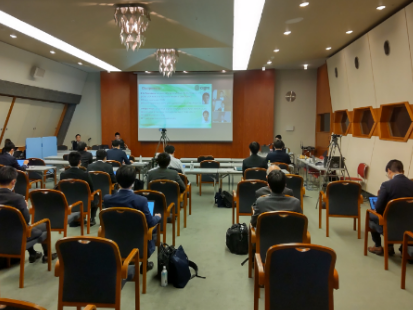

NGN Forum: Roles and Initiatives of Young Professionals in CIGRE Activities
Conclusion
The CIGRE 2022 Kyoto Symposium was successfully held as a hybrid event on 5-8 April 2022 with a large number of experts in the power system sector participating.
During the four-day Symposium, 456 participants from 27 countries attended in a hybrid conference format, 156 papers from 21 countries were presented in 22 oral sessions and 2-day poster sessions.
Various kinds of subjects in the power system industries were shared and discussed among participants related to Symposium theme, Power system transformation including distribution system.
Thumbnail & banner credit: Photo by Daisy Chen on Unsplash


